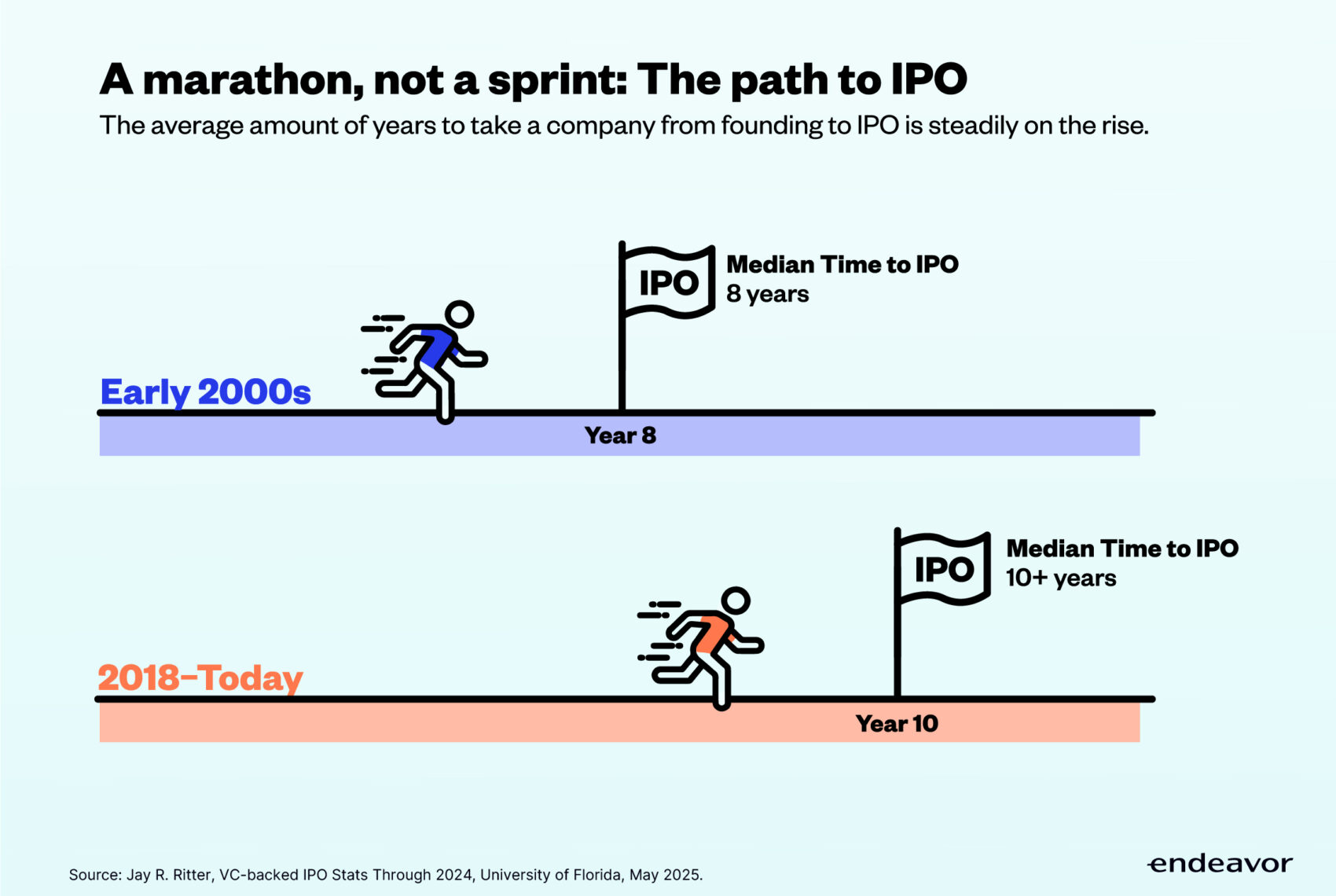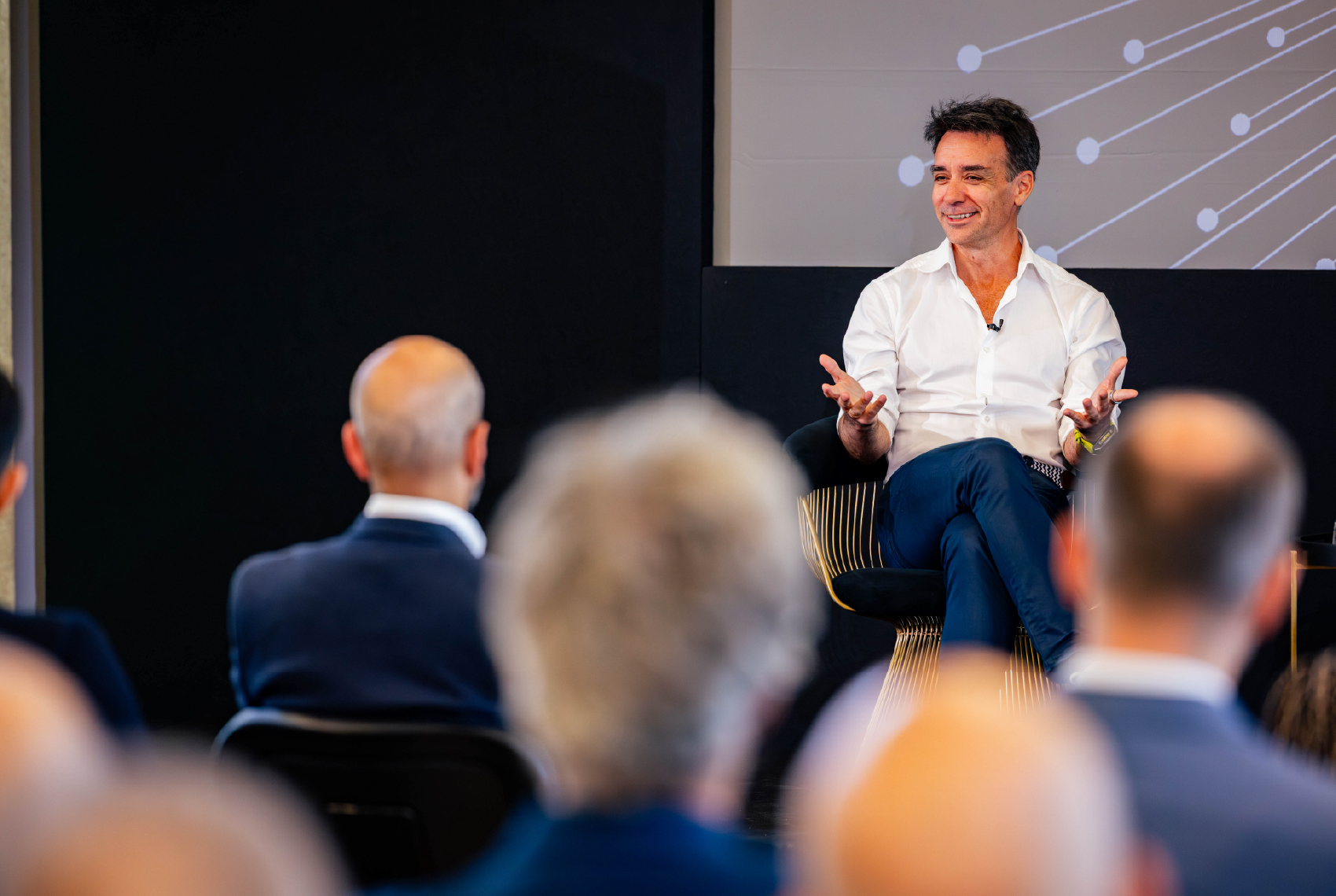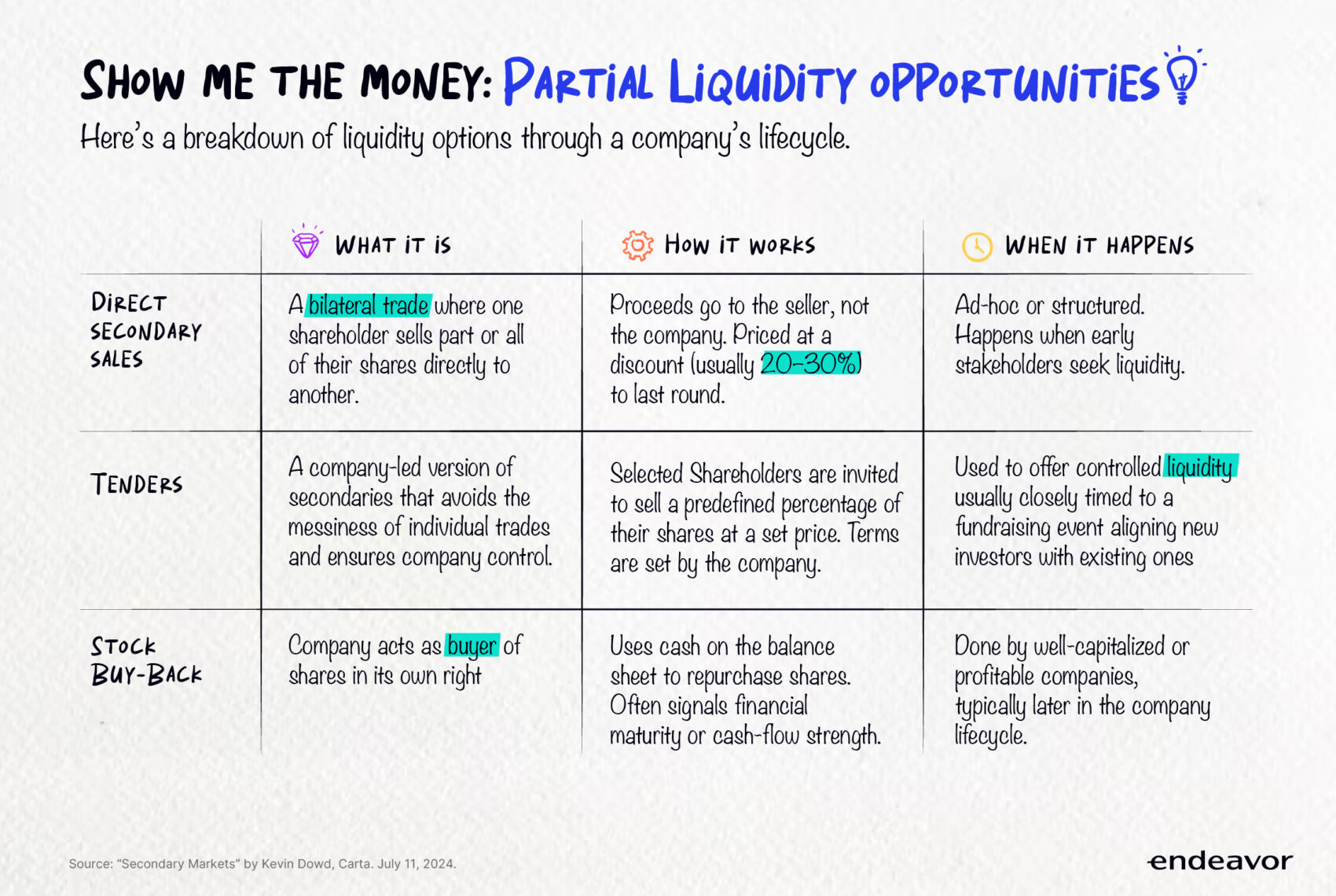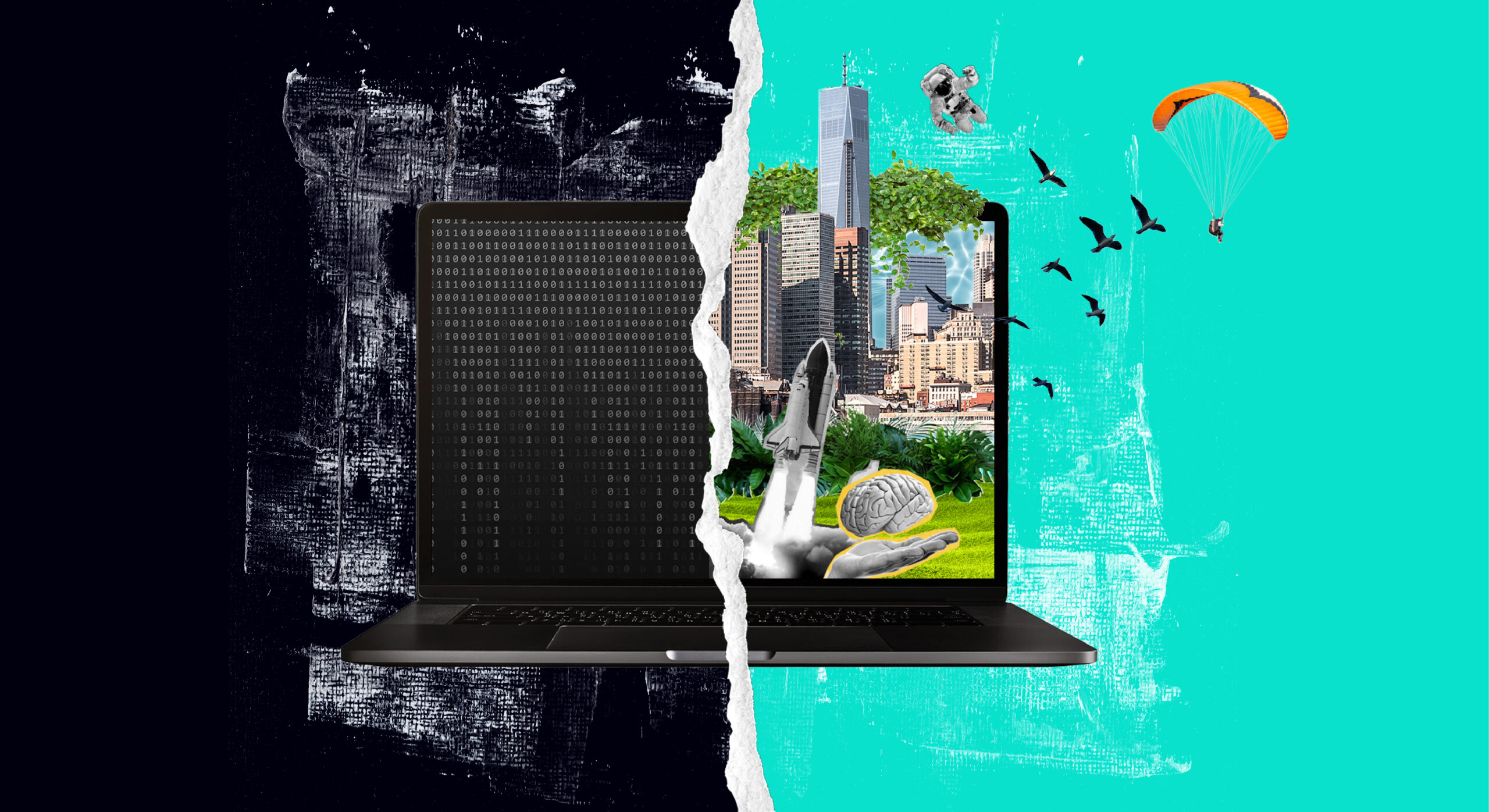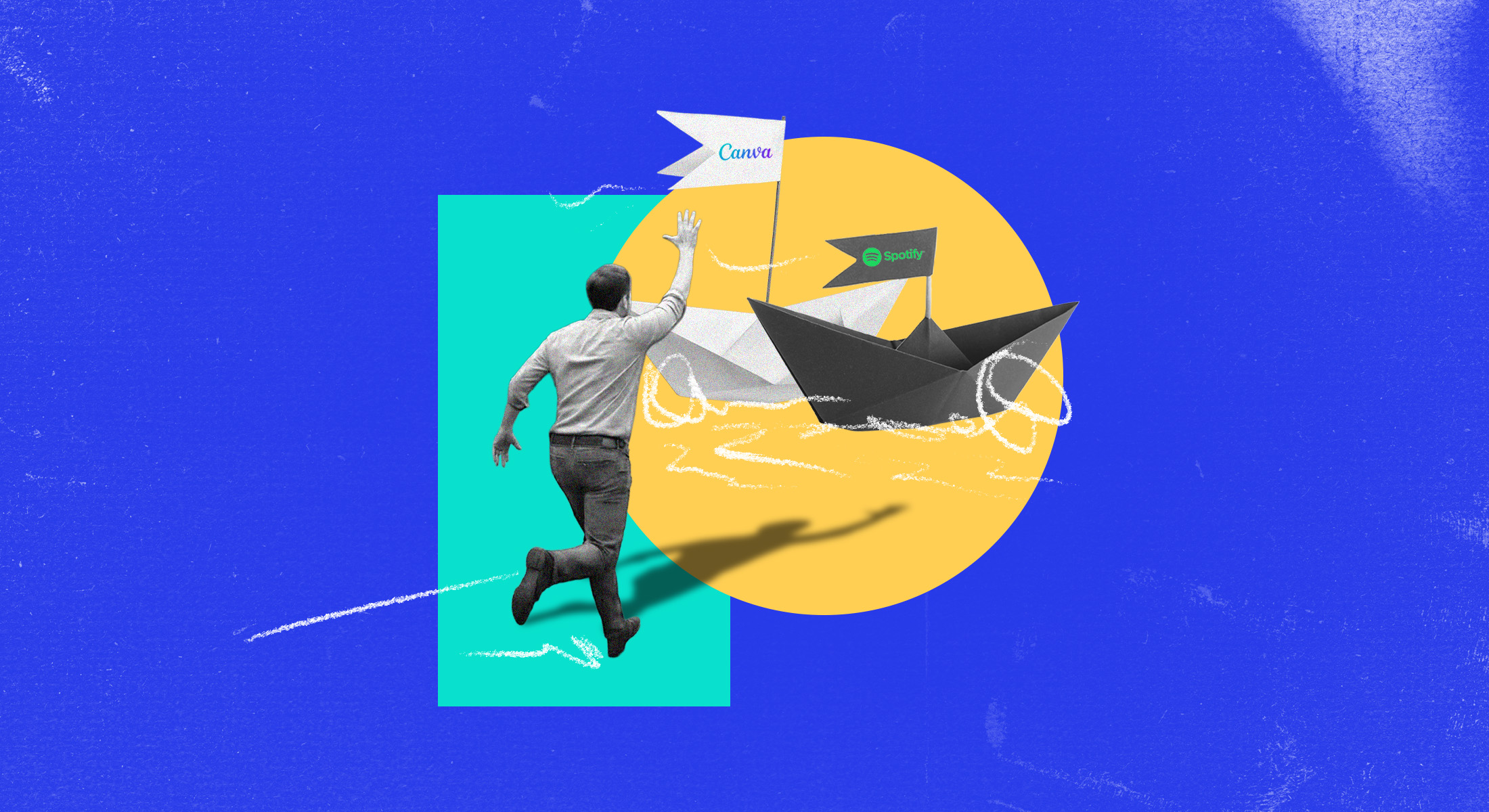At the core of every list of traits that makes a great founder is usually a healthy appetite for risk. But the pressures of risk maintained over the course of years, even decades, is also a recipe for burnout. If company building is a marathon, why do we deny founders and early employees a boost along the way?
Illiquidity, or being unable to sell any stake in your company, feeds a false narrative around founders: that we need to starve them to keep them hungry. But truly mission-driven founders are here to solve a problem, beyond making big money; if they were after a quick buck, there are easier ways to do that. And illiquidity has knock-on effects throughout the entire company ecosystem, affecting employee morale and leading to high turnover for those who can’t afford to stick it through the lean years.
It’s time to change the narrative around capital – and consider the well-earned boost partial liquidity can offer.
Partial liquidity — a process whereby some of the asset is converted into cash while retaining ownership — isn’t about cashing out; it’s about staying in. It gives founders and early employees the financial breathing room they need to stay focused, motivated, and committed for the long haul. It’s not a distraction from success, but rather the fuel that makes it possible.
The changing entrepreneurial landscape
With liquidity at an all-time low, and an IPO drought over the past four years, building for the long haul has real trade-offs. Employees start losing faith that their options will turn into cash, early investors need to sell their stake because their fund is winding down, and founders are unable to cash in the risk they took by opting to start a company rather than taking a cozy corporate job.
At the same time, especially in the US, going public isn’t a must anymore but an option, and increasingly a less desirable one. Today, the most valuable tech startups (Stripe at $91.5B; Canva at $49B; SpaceX at $350B) prefer to stay private longer, avoiding the scrutiny of the public markets and the complexity and cost it creates. They can tap into a dynamic secondaries market and robust late-stage funding options.
But what about emerging-market entrepreneurs, where capital at the late stage is increasingly scarce and secondary markets are far less developed?
Company-wide liquidity events are still the main source for shareholders to get liquidity and for the company to tap into long-term financing options. At Endeavor, our work is to support these Elsewhere markets, and part of that means acknowledging when it’s time to step off the beaten entrepreneurial path.
At the 2025 Endeavor Investor Meeting in London, Creditas founder Sergio Furio spoke of an IPO as only one part of a larger vision. “In the past, companies would IPO relatively early, such as at a billion-dollar valuation, in some cases half a billion dollars, and then they would experience exponential growth for decades to come. Today markets are prioritizing companies at a larger scale from the moment of the IPO.
"If you do a public listing when you’re worth $1B or even $2B, most of the time, you may end up being forgotten by equity analysts. Private markets are providing good solutions for companies with valuations at that range and we want to avoid this small public company trap, continue compounding our growth to build a great business ahead of the IPO."
“A public listing will be something obviously relevant but we consider it just another funding round, especially because most of our information is already public given we have publicly traded corporate bonds.”, he adds.
Typically, illiquidity is seen as an incentive for founders to build toward impressive outcomes; the only way to benefit from the big prize is by sticking around long enough. But with companies staying private longer, without liquidity for founders, key employees and investors, capital is not being recycled, redistributed and entrepreneurial risk is not rewarded. This inflow and outflow of capital is critical for ecosystems and innovation to flourish.
Michael Lahyani, founder and CEO of Property Finder, agreed. Speaking at the 2025 Endeavor Investor Meeting, he said, “I need to provide liquidity to my shareholders. General Atlantic has been invested for seven years, they’re very happy, but at some point they’re going to need some liquidity.” There are lots more paths that can be taken, Michael highlights: “There are different avenues. There are local sovereigns excited to come in, there’s plenty of growth funds, there’s crossovers, pre-IPO kind of funds, and then finally the IPO.”
Each of these options comes with its own trade-offs. For example, a tender has the advantage of offering structured liquidity without individual shareholders having to source buyers or negotiate terms, while a buyback can send a powerful signal to the market that a company has strong financials. Companies in earlier stages will find it more convenient to organize smaller secondaries around primary rounds, while a more mature company may take risk off the table.
But no matter the stage, founders considering partial liquidity need to consider a range of factors, including their reasoning around the tangible argument. For example, is it personal — like a founder adjusting to new parenthood — or professional, like keeping top talent and lifting team morale? Questions of timing (the better the company’s situation, the more leverage the founder has to sway investors) and transaction size also matter. Founders should also consider the potential sellers and buyers and how the liquidity will be organized, as the more complex the transaction, the greater cost and administrative lift.
- Diversify, don’t exit: A secondary is about de-risking, not cashing out.
- Communicate intentions: If you’re a founder or senior executive, explaining why you’re selling builds trust with the board and investors.
- Check investor expectations: Some venture capitalists accept founder liquidity as long as you’re meeting milestones, while others may push back.
- Stay aligned: Selling too much too early raises concerns about commitment.
The freedom to grow
Generational companies are not built in a day. It took MercadoLibre 14 years as a publicly traded company to reach a market cap of $100B. So did Turkish delivery company Yemeksepeti, before it sold for $598M to German delivery company DeliveryHero.
Illiquidity is both the carrot and the stick for entrepreneurs – but too many collapse by the roadside as they chase huge success. Embracing partial liquidity can provide flexibility in times when company-wide liquidity is scarce or the timing isn’t right. It ensures that we don’t lose sight of the human cost of doing business, rewarding founders and early employees so they have the momentum they need not only to finish the marathon, but to excel in it—and to keep building for the long term. It has positive effects for overall company health, increasing morale and retention.
We need to give founders the chance to be incentivised for the long term, and this means allowing for more flexible liquidity in the short term. Across emerging markets, we’ll see partial liquidity lead to better outcomes for investors, founders, employees, and the entire ecosystem.
Featured Stories
What Endeavor’s Newest Entrepreneurs Are Doing Differently
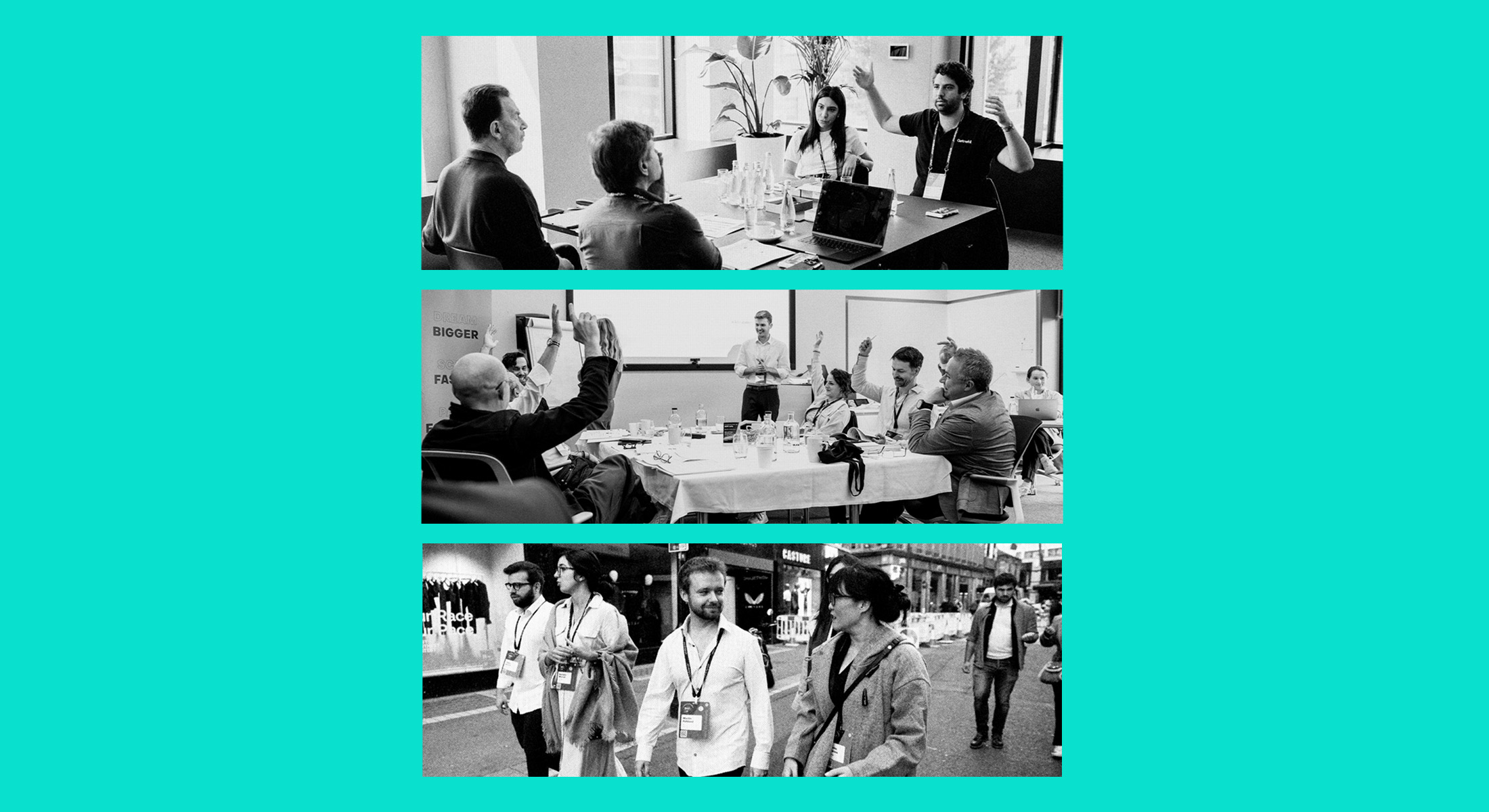
What Makes a Founder Worth Betting On? Here’s How We Select the 2%.
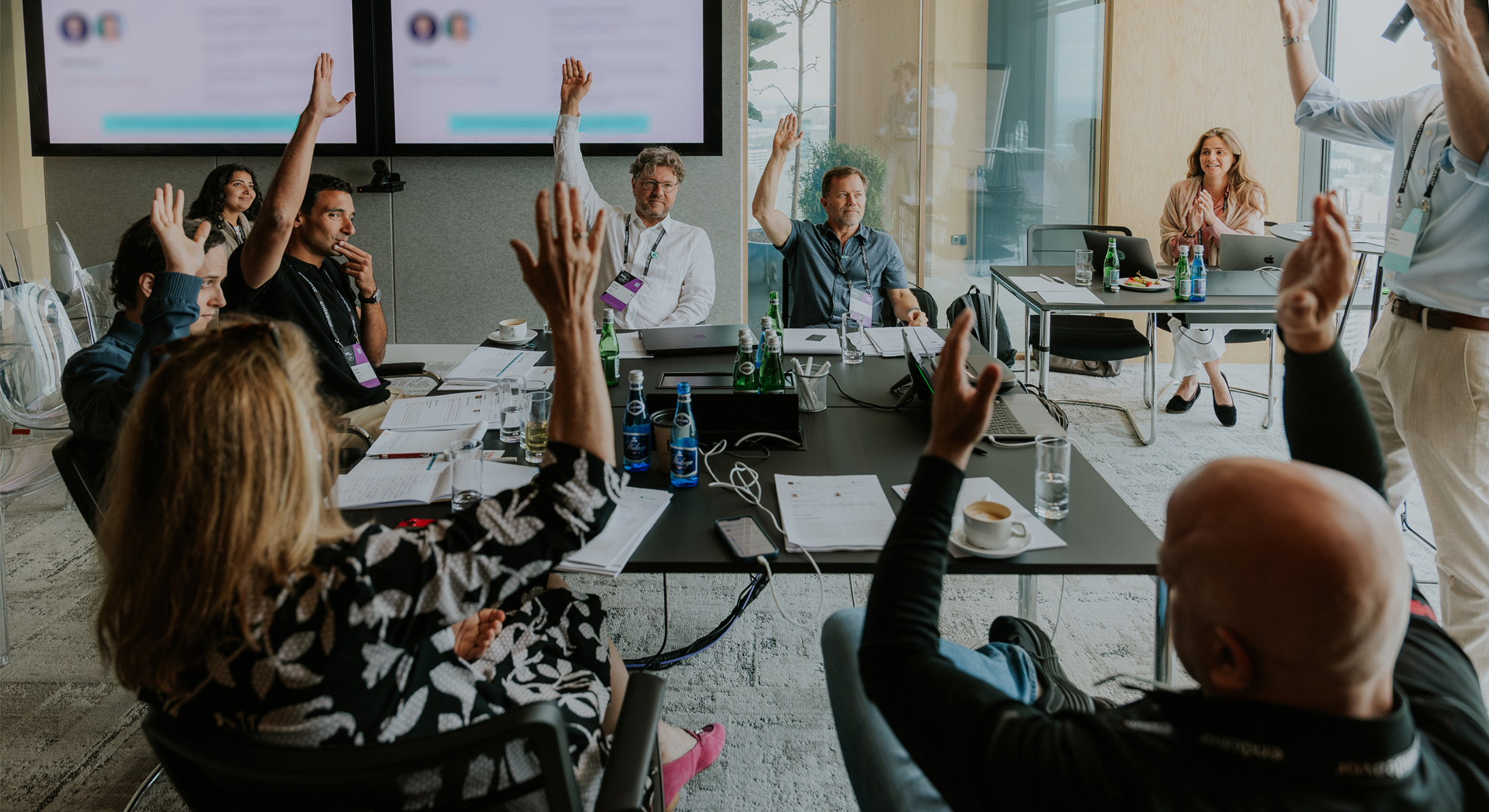
AI isn’t confined by geography; capital is. Let’s shift the map.
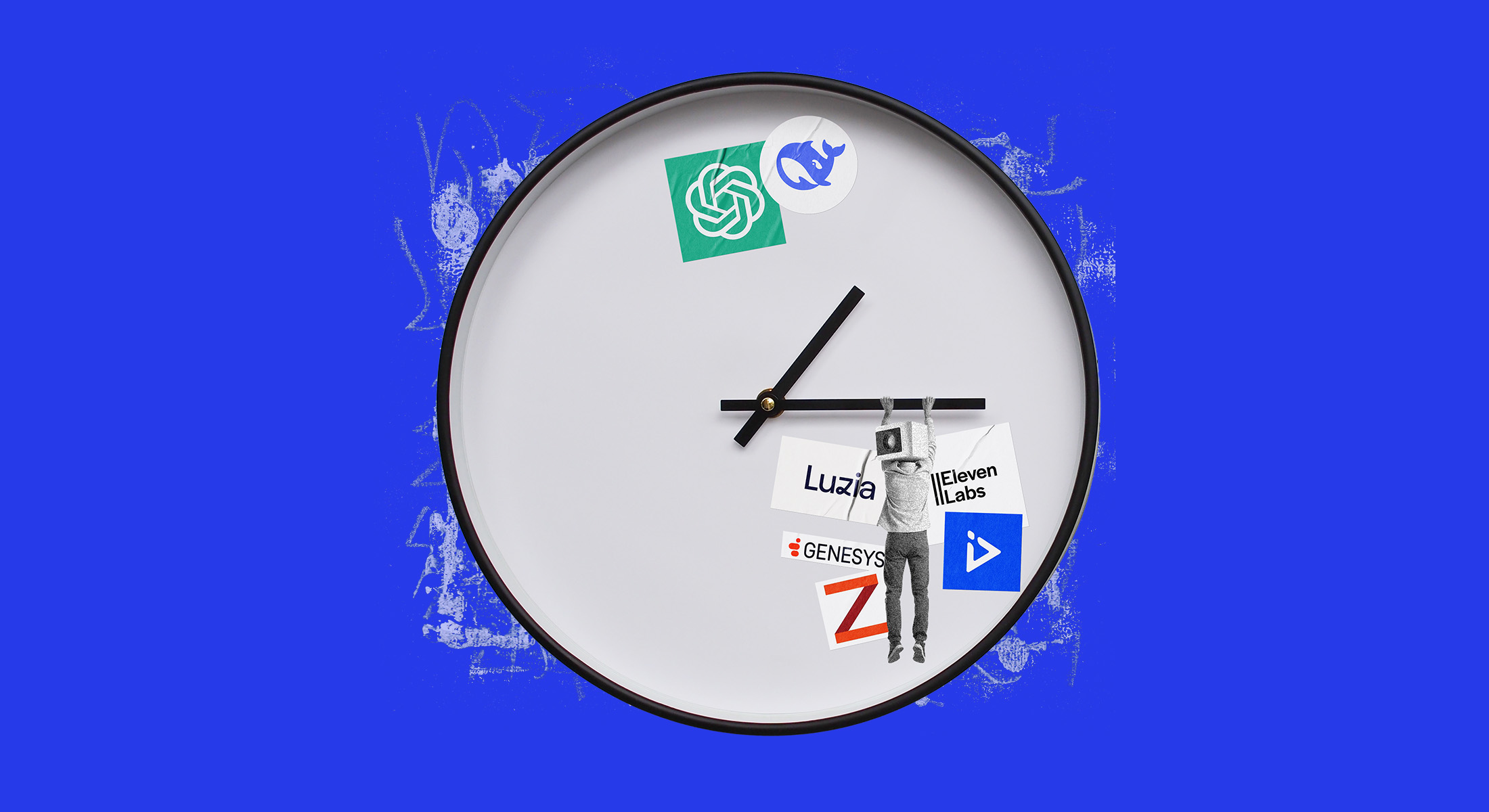
Related Articles

What Endeavor’s Newest Entrepreneurs Are Doing Differently


